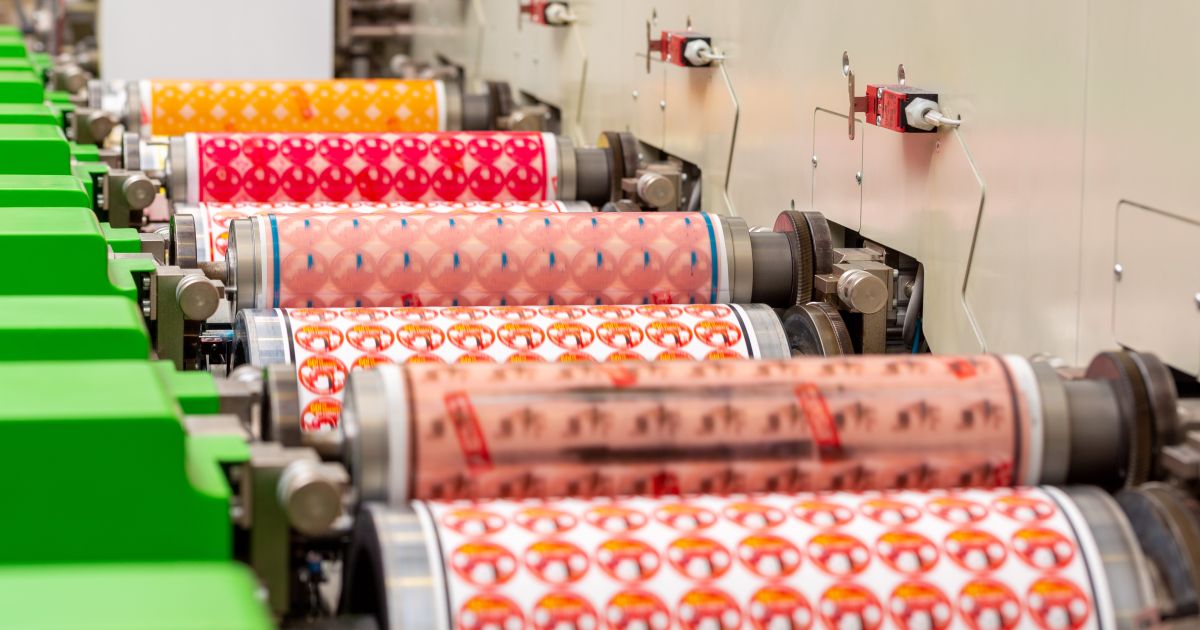Flexographic printing machines have dramatically evolved over the years, offering advanced solutions to print various materials such as paper, cardboard, plastics, and metals. These machines are at the heart of producing everyday items like food packaging, labels, and catalogs. For marketing professionals, understanding the capabilities and benefits of these machines can help leverage print technologies in promoting brands effectively.

Introduction to Flexographic Printing Technology
Flexography, commonly referred to as flexo, is a modern version of the letterpress. It utilizes flexible relief plates to print using a variety of inks. The process is known for its high speed and efficiency, which makes it ideal for long runs and various substrates. A key factor in flexography’s success is its versatility and adaptability.
How Do Flexographic Printing Machines Work?
The main components of a flexographic printer include the substrate feed system, inking units, plate cylinders, and drying systems. Simply put, the substratewhether its paper or plasticpasses through several stations that apply ink and dry the surface. Each station uses a flexible plate that has a raised image of the desired graphic.
Advantages of Using Flexographic Printing
- High-Speed Production: Flexographic presses are notorious for their incredible speed, capable of printing thousands of impressions per hour.
- Cost-Effective for Long Runs: Since the machine setup is relatively simple and fast, it reduces costs, especially for large volume productions.
- Versatility: Flexographic printing can be used on a wide array of materials and surfaces.
- Sustainable Option: Water-based inks and environmentally friendly materials are more common in flexography.
Applications in the Print Industry
Flexographic printing machines are widely used in the packaging industry, label manufacturing, and even newspapers. Food packaging is one prominent application where flexo is indispensable due to its efficiency and compatibility with diverse materials.
Why Marketing Professionals Should Consider Flexo
For marketing strategies, high-quality packaging contributes significantly to brand perception and customer satisfaction. Flexographic printing ensures vivid colors and durable prints that enhance brand visibility. Marketers can utilize the technology for striking, attention-grabbing packaging.
Understanding the Equipment and Technology
Flexographic printing machines consist of several key components: the inking system, plate cylinder, and substrate delivery system. Each plays a critical role in achieving the final printed product. Technology advancements continuously improve the precision, speed, and quality of flexo equipment, making them critical assets in the printing industry.
Key Considerations for Investing in Flexo Technology
When considering purchasing flexographic printing machines, businesses must evaluate the machine’s capabilities, size requirements, and maintenance needs. Additionally, the initial investment versus long-term benefits should be considereda balance between cost and productivity will lead to strategic advantages.
Visit our detailed guide about the working principles of flexography.
Innovation and Future Trends in Flexographic Printing
Towards the future, advancements in automation and digital technologies pose significant potentials for flexographic printing machines. Smart presses with real-time analytics and AI integration will propel quality control and efficiency to unprecedented standards.
Comparing Flexographic Printing to Other Methods
In comparison to digital or offset printing, flexo is renowned for its ability to handle large volumes efficiently. While digital excels in short runs with variable data, flexo shines in areas requiring high speed and durability.
You might find it interesting to see how flexography compares against digital methods.

FAQ Section
1. What materials can flexographic printing machines print on?
Flexographic machines can print on an array of materials including paper, metal films, and plastics.
2. Are flexographic printing processes environmentally friendly?
Yes, they typically use water-based inks and less energy, making them a sustainable choice.
3. How does flexography ensure quality in printing?
The technology uses state-of-the-art plates and inks to deliver precise and consistent results even in high-speed operations.
Learn more about the cost implications of using flexographic technology in our printing cost guide.






